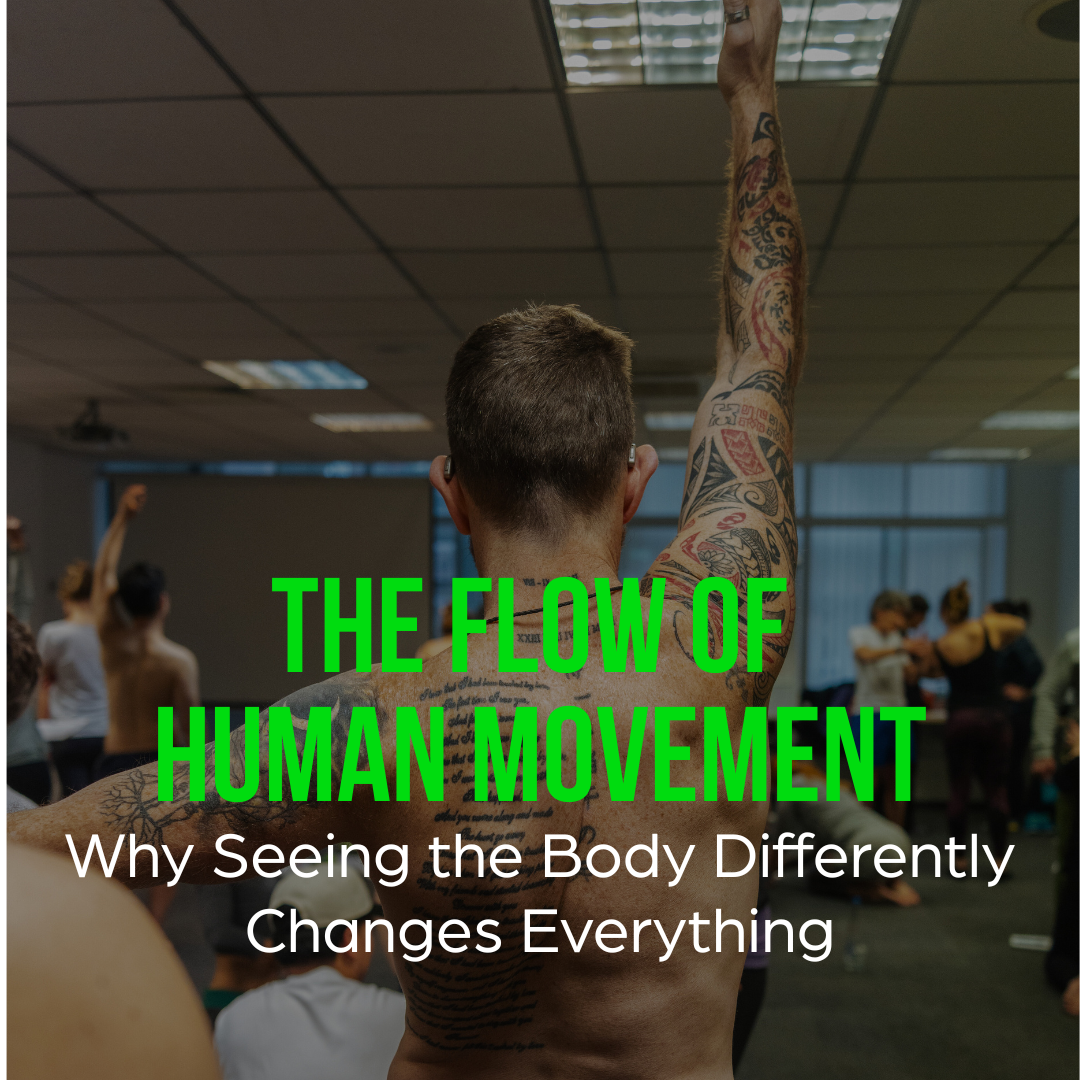Most of us were taught to think of the body in parts.
We learn about the joints in the body as isolated parts and in open chain movements, as if movement were a set of separate disconnected events.
But real life doesn’t work like that in the closed chain or when we are upright and in motion.
In this environment, when you move anything , you move everything.
The moment your foot interacts with the ground, a wave of motion travels up through your body. Your foot bones move, your ankle responds, your knee follows, your hip and spine adjust, and your head subtly shifts to balance it all.
It’s an elegant, intelligent conversation that happens simultaneously and in less than a second. And it’s happening with every single step you take.
A map that was always there for all to see…
When I began exploring human movement back in 2000-2005, I wasn’t setting out to invent a model.
I was simply trying to understand how the body really works when we walk. Call it an obsession!
What I found was less of an invention and more of a discovery — a map that had always been there, hidden in plain sight.
By studying how each joint surface, ligament and muscle fibre aligned, I uncovered a pattern: a consistent, predictable rhythm that repeats every time we move through a step.
In all of us!
Over a few years that discovery became my Flow Motion Model — a way of understanding how every bone and joint moves in three dimensions through a single footstep.
I call it the truth of human movement, as it’s literally forged from the shape of our bones — not something I made up, but something I uncovered, brushed free from the sand like an ancient fossil.
Seeing the Body Differently
Once you see movement through this lens, everything changes.
Instead of chasing symptoms, you start seeing relationships.
A stiff ankle is no longer just an ankle issue.
It’s part of a chain of connected motions that impact the pelvis, limit ribcage motion, and shift the way the head sits over the spine.
You stop asking, “What’s wrong with this part of the body?” and start asking,
“What’s this joint responding to?”
What is the whole body doing that creates this inevitable outcome at the ankle?
That’s the shift that defines Anatomy in Motion (AiM), seeing the body not as a problem to fix, but as a system trying to find its way back to centre.
Anatomy in Motion
Every joint is designed to move freely between its available ranges in three planes of motion. Each one required to flex and extend, to rotate in both directions and adduct/abduct in order to find balance.
When a joint loses that freedom, the whole system adapts around it.
At AiM, we live by a few simple rules that guide how the body restores itself:
- Muscles lengthen before they contract. Muscles are actually set up to decelerate bone motion and contract from lengthened positions
- Joints act; muscles react. When the joints move as the bony surfaces intend and allow, the muscles no longer need to be “taught”, they simply respond.
- Everything orbits around centre. The body always finds balance regardless of the resting position of its structures.
More than a theory, these are truths you can’t unsee when you truly observe the body in motion.
Bringing the Map to Life
The Flow Motion Model provides a map for us to quickly and easily navigate the system while the AiM Method guides us in how to use it.
Through observation, exploration and guided movement, we can help the body rediscover the phases of motion it’s lost; the forgotten shapes it once knew so well.
When that happens, movement becomes effortless again.
Pain eases, posture rebalances, and the body remembers what it’s capable of.
Your Invitation to Learn
Every practitioner, every curious mover, and every human being who walks the earth can benefit from understanding how this system works.
The AiM Pathway offers you that opportunity.
It’s a complete learning journey from Lower Limb Biomechanics to The AiM Method now fully available online.
Whether you’re deepening your professional practice or simply exploring how the body truly moves, the AiM Pathway will change the way you see every step.
Because once you see it, you can’t unsee it.
And once you feel it, you’ll never move the same way again.


One Comment
“What’s the joint responding to?”, I like that one! Good stuff GW.